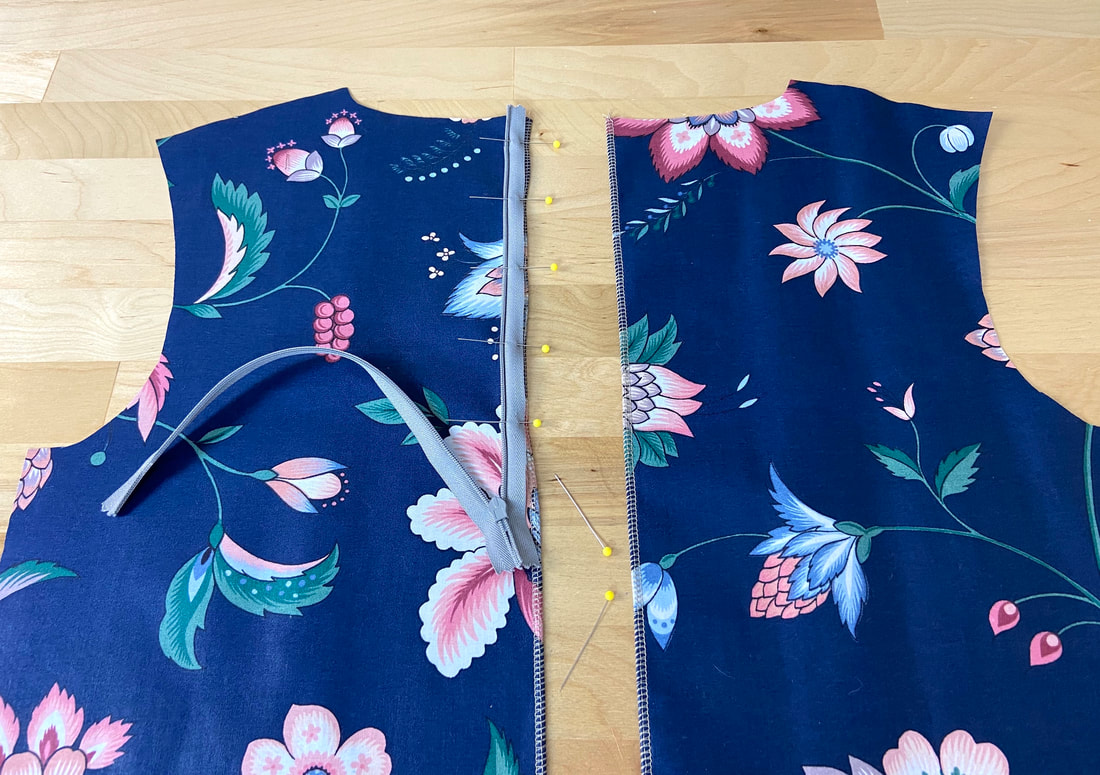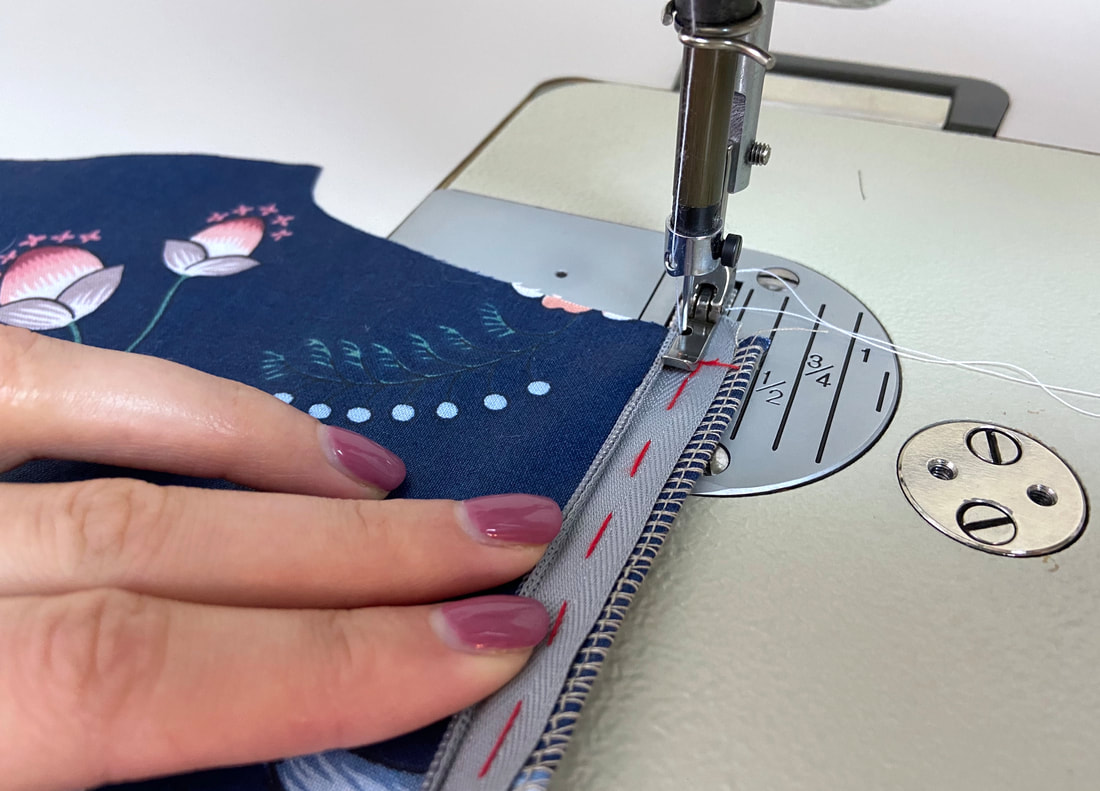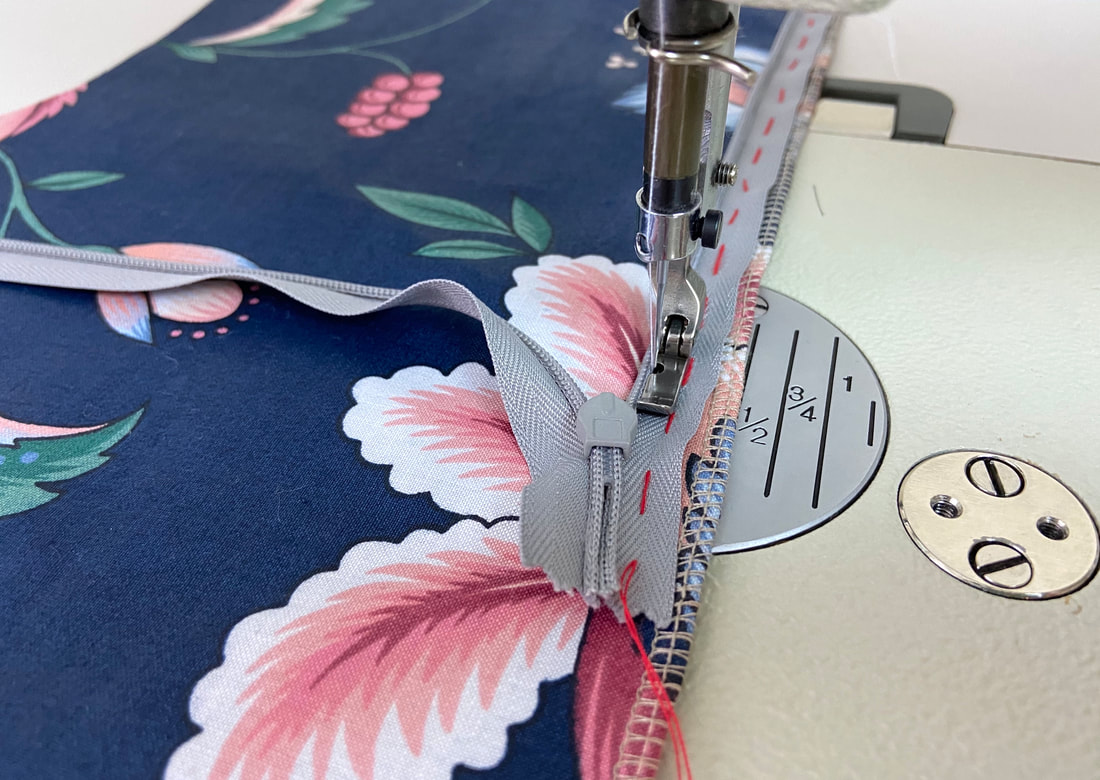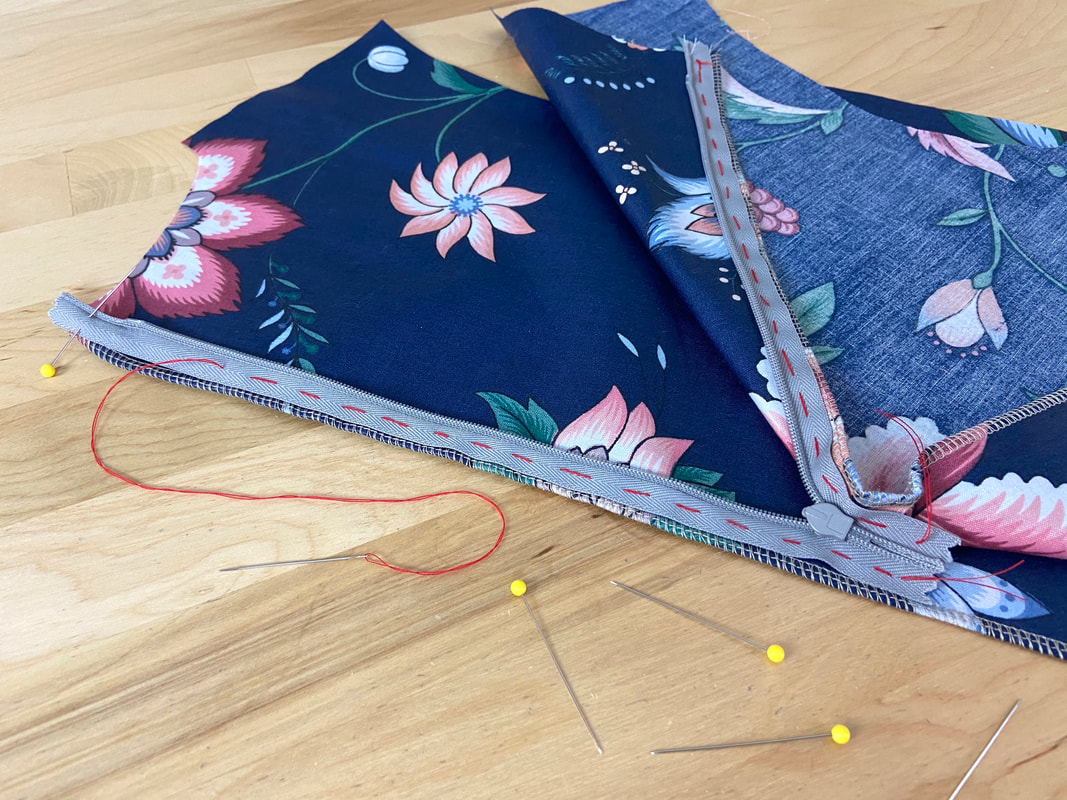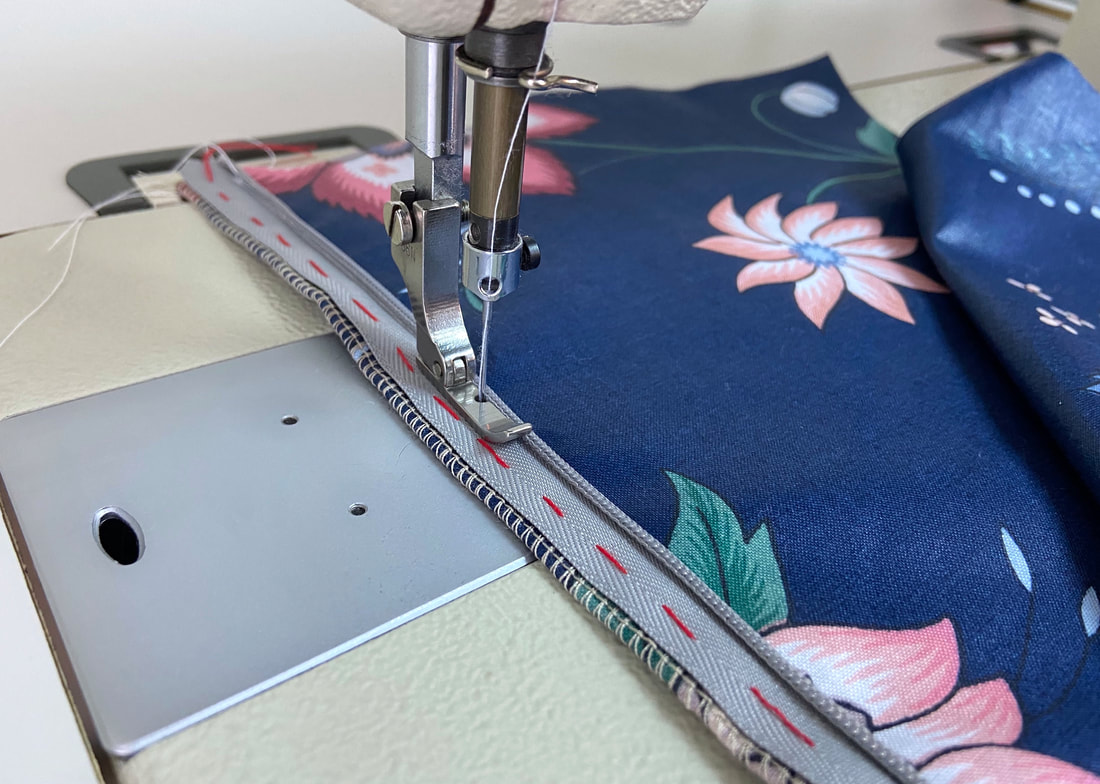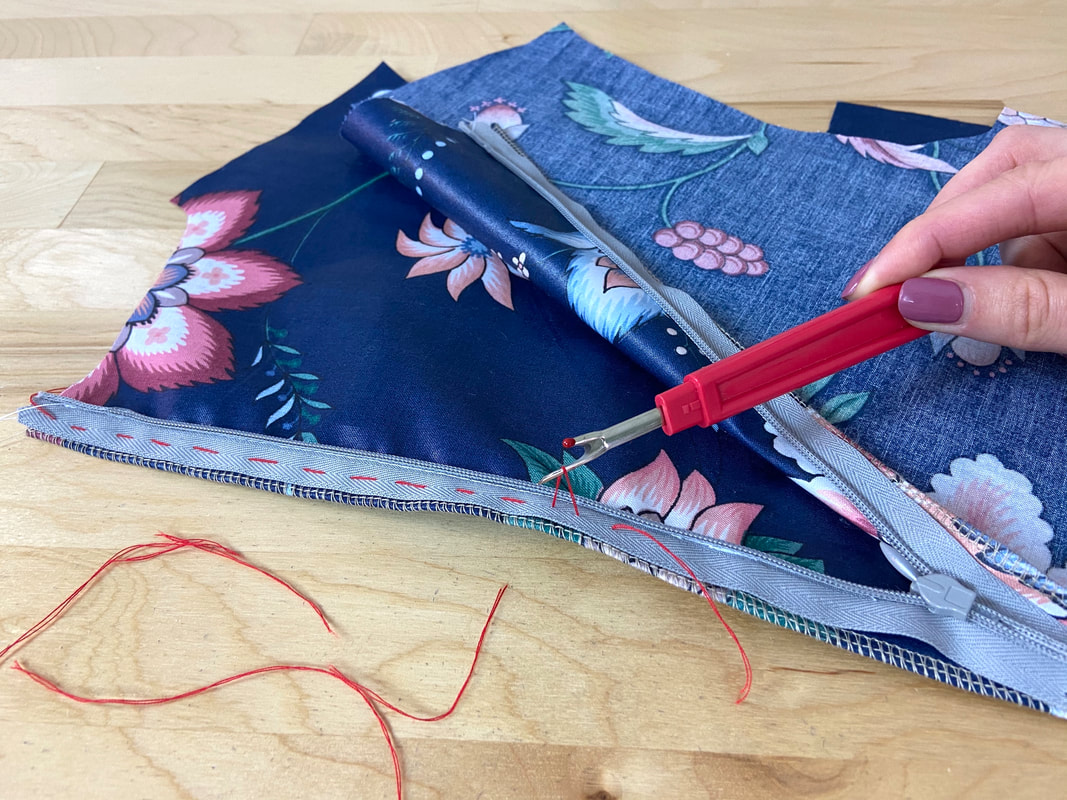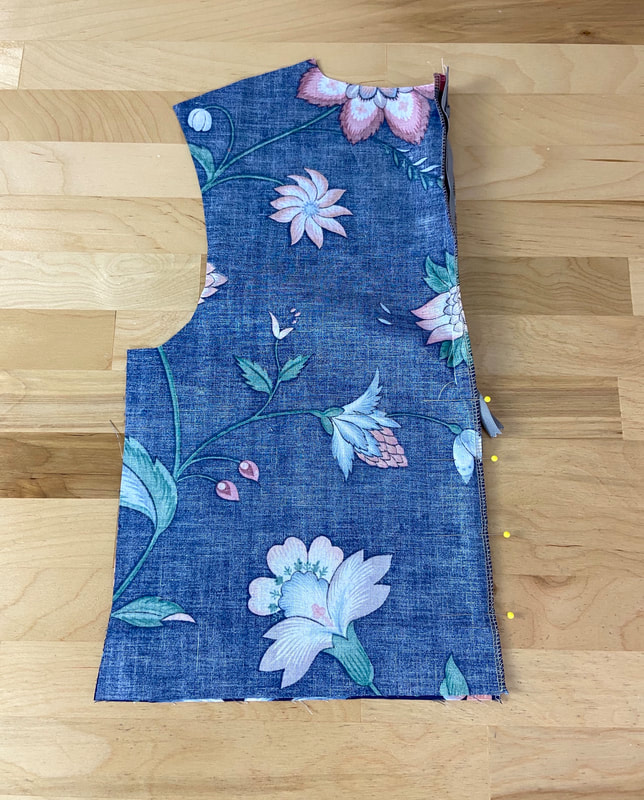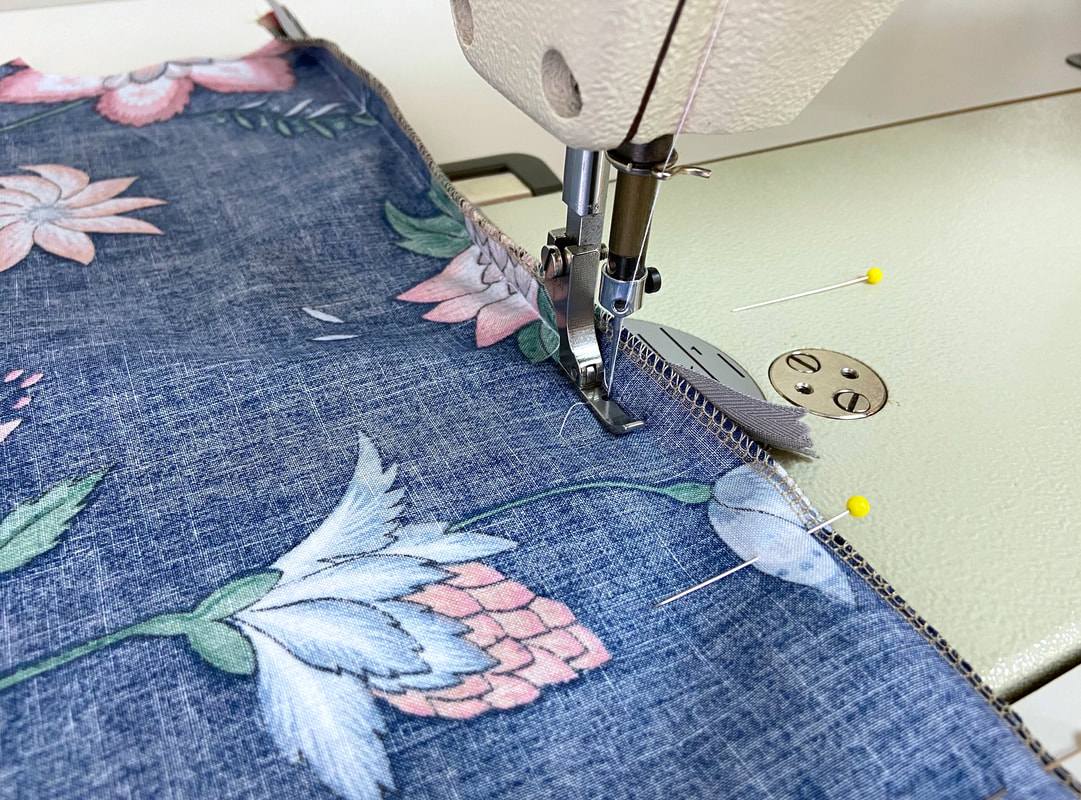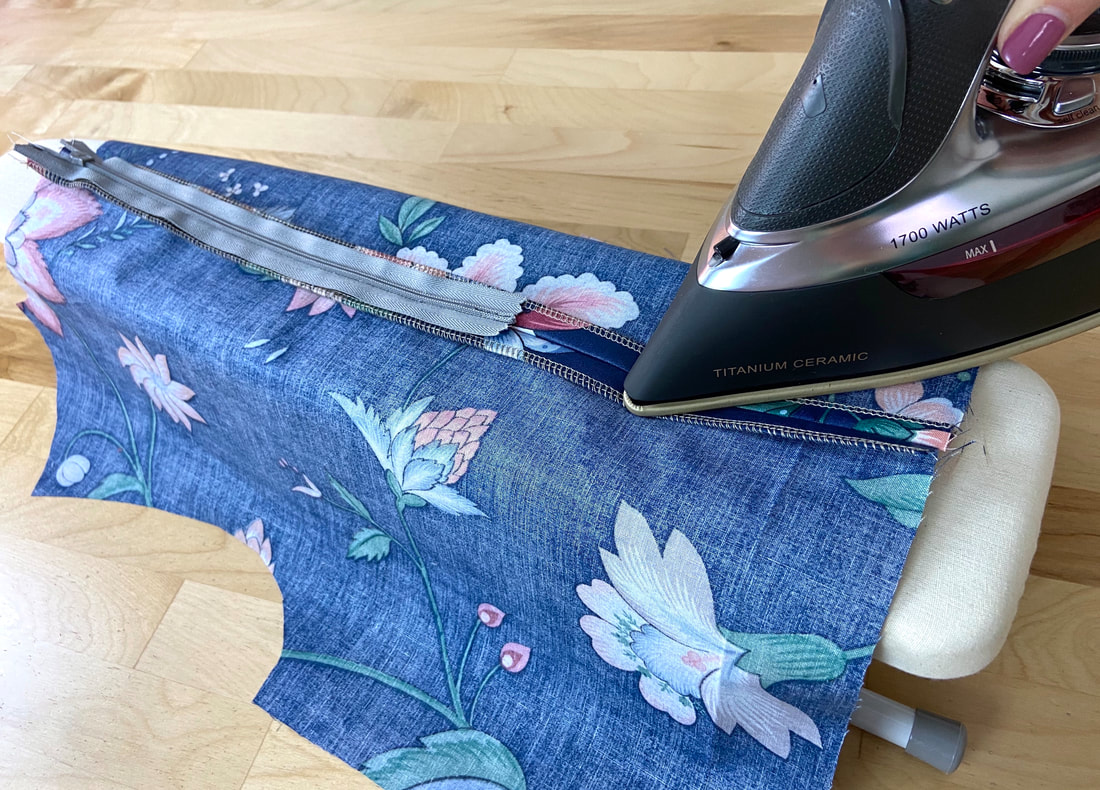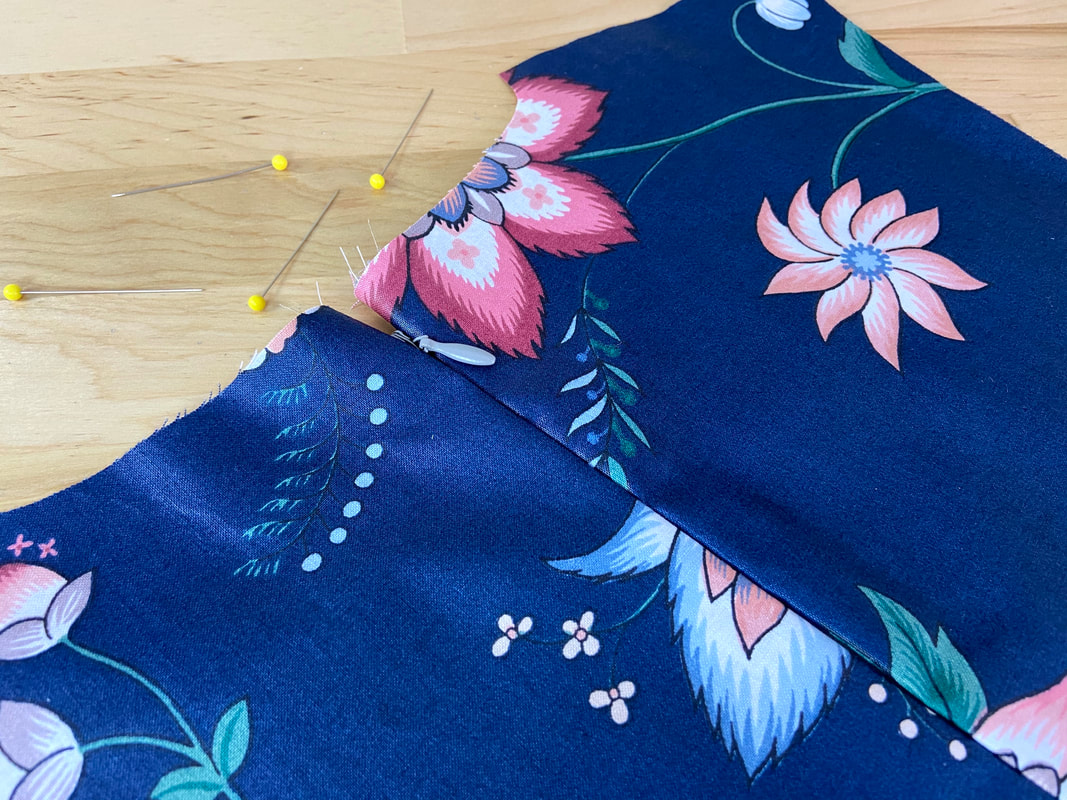Mini Tutorial: How To Sew An Invisible Zipper Application With A Regular Zipper Foot
If you do not have a specialized invisible zipper foot or your sewing machine model does not support an invisible zipper foot attachment, you can sew an invisible zipper application using a regular right or left sided zipper foot. Your sewing machine kit should provide this conventional presser foot regardless of how basic your machine model is.
Here's how to sew an invisible zipper using a regular zipper foot:
Here's how to sew an invisible zipper using a regular zipper foot:
1. Clean-finish the seam edges separately using the technique of your choice. The most common finish is an overedge stitch like a serging or zigzag stitch.
Open the invisible zipper and align the left portion of the zipper foot to the left seam edge with face sides touching. Insert pins perpendicular to the edges to secure the layers together. Consider replacing the pins with hand basting as this will keep the edges more securely aligned.
Open the invisible zipper and align the left portion of the zipper foot to the left seam edge with face sides touching. Insert pins perpendicular to the edges to secure the layers together. Consider replacing the pins with hand basting as this will keep the edges more securely aligned.
2. Starting at the top of the zipper, use your fingers to lift the zipper coils and expose the fold crease underneath. Insert the needle directly on this crease line using a left-sided zipper foot alignment. Continue stitching in the crease created by the zipper tape fold, keeping the coils lifted through the entire stitching process.
3. Next, align the right zipper tape to the right side of the seam edge with fabric and zipper face sides touching. For extra stability, it helps to hand baste the tape to the garment layer underneath. It is important that this second zipper tape portion is aligned at the same location along the seam edge- use the top horizontal edge as a reference guide in the alignment process.
4. Using the zipper foot's right-sided alignment, stitch in the crease created by the folded tape, keeping the coils lifted throughout the entire stitching process. The zipper foot plate should effortlessly glide against the zipper coils keeping the needle perfectly aligned in the process.
5. Once both sides of the zipper are stitched, remove all hand basting using a seam ripper.
6. To complete the bottom portion of the seam, align the seam edges together with face sides touching as you would with any conventional seam. Insert pins perpendicular to the edges to keep the layers aligned. It also helps to move the bottom of the zipper away from the garment to keep the layers flatter at the bottom portion of the zipper.
7. Using the zipper foot's right-sided alignment, insert the needle at the end of the existing zipper stitch and stitch downward at the designated seam allowance - 1/2" in this case. If the bottom of the seam is long, you should switch to a regular presser foot once you've stitched a few inches from the bottom of the zipper.
8. To complete the seam, iron the seam allowance open from the wrong side of the garment as pictured above.
On the right side of the zipper application, the zipper should transition smoothly into the bottom portion of the seam. With the exception of the zipper tab, the zipper itself should disappear into the seamline.

